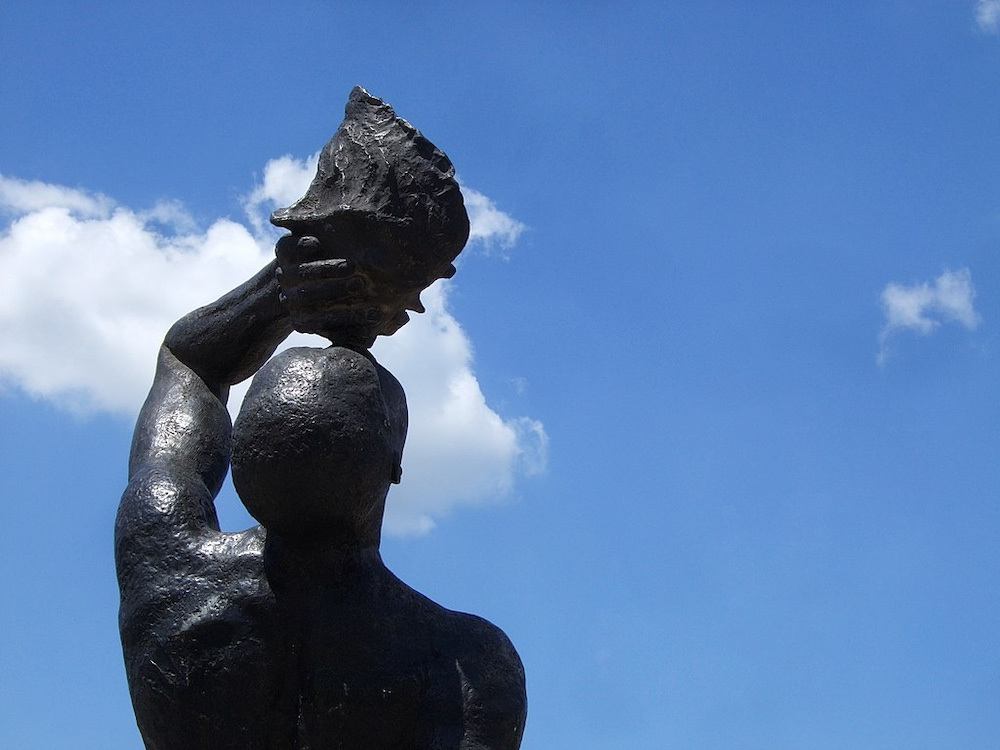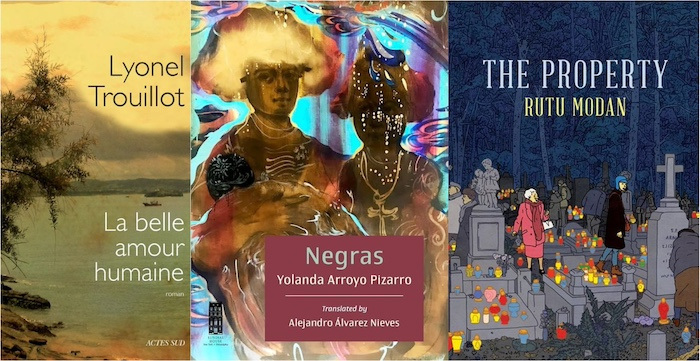After Migration, the Search for Roots
Posted on June 12, 2024

I ask that you join me. To come to learn my roots, which I spent a lifetime missing, with me.
With these resonant words, the Afro-Italian writer Marie Moïse invites readers along as she uncovers her family’s past in Africa, Haiti, and Italy. That past is largely unknown to her when she begins; the essay, titled “We Cried a River of Laughter,” culminates in an imagined return to Haiti.
Between the beginning and the end of the essay are the stories that the reader needs to understand in order to make the journey alongside Moïse. For example, there is the evolution of the family’s name from what it was in Africa—erased in enslavement—to the French colonial Moïse (Moses, “saved from the water”), to the name’s Italianized pronunciation after Moïse’s grandparents fled Haiti.
And there is the simultaneously larger and more particular, not completely communicable story of what it was like to grow up as Marie Moïse, “saved by the waters, but once again condemned to never set roots down into the land.” Every smaller story in this essay seems to be trying to convey what has previously failed to be communicated; toward the end, as Moïse invites us to travel back with her to Haiti, she explains the reason for the invitation:
You are one of the people who told me, “I am not like you,” and I suffered without knowing how to respond.
“We Cried . . .” in the Classroom
“We Cried a River of Laughter” is a complex work, blending nonfiction and imaginative writing, science and personal history. Translator Barbara Ofosu-Somuah has rendered it into an English accessible to readers in grade nine and above. To support students in navigating the essay, you might assign different sections (each with titles such as “The Failure”) to individual small groups of students to closely read and then share.
Launching the Essay
Even before students begin to read, you might ask them to write responses to the prompt:
How are you similar to and different from other people around you? You can define “people around you” as you’d like: classmates, family members, others in your community, etc.
To help students feel safe in their responses, you might specify that this writing will be private, for their eyes only. Also, if students are familiar with graphic organizers such as Venn diagrams and T-lists, they can respond in those forms.
Alternatively, for a more text-centered initial activity, you could instead ask students to closely read and respond to the line from the essay quoted above: “I ask that you join me. To come to learn my roots, which I spent a lifetime missing, with me.” Once you have discussed that line as a group, ask students to keep it in mind as they read and mark parts of the essay that seem to relate to its meaning.
Contextualizing “We Cried . . .”
Students can hear Marie Moïse talk about how writing this piece “reopened [her] Haitian eyes” to her relationship with her father in a panel from CUNY (7:30–8:30). In minutes 16:42–19:18, Moïse discusses her relationship to whiteness, Blackness, and “Italianness.”
They can also listen to translator Barbara Ofosu-Somuah talk about and read an excerpt from her translation of “We Cried a River of Laughter” (begins at 12:44).
And to understand an important moment in Haitian history, students can watch a short video to learn about the maroons, escaped enslaved people “living outside the system” in pre-revolution Haiti.
Possible Assignments:
- Literary essay: Choose a line from the essay that particularly resonates with you. Write about its meaning within the larger story Moïse tells. If you like, you can also describe your personal connection to the line.
- Creative writing: Write about a journey you would like to take, but haven’t. Imagine what it would or will be like.
Pairs well with . . .

Pairings from WWB Campus:
- The novel excerpt “La Belle Amour Humaine,” also from Haiti, which features a young woman’s investigation into the past (blog post with contextual resources and potential assignments)
- “Where Have All the Sundays Gone?,” a Japanese story about a woman’s return to a place where she experienced first love
- “Appointment in K City,” a Chinese story about an attempt to understand a traumatic past
- “Things Elude Me,” an Egyptian poem in which a woman reflects on a former home
- “Walking the Keihin Factory Belt with Stuart Dybek,” a Japanese essay that, like this one, features an imaginary journey
Pairings from elsewhere:
- Negras (Las Negras), a fictional reconstruction of Caribbean women’s lives under slavery
- The Property, a graphic novel about a woman’s return to Poland years after she was sent away to hide a pregnancy and the rest of her family perished in the Holocaust
By Nadia Kalman and Maggie Vlietstra, with research by Maggie Vlietstra.



